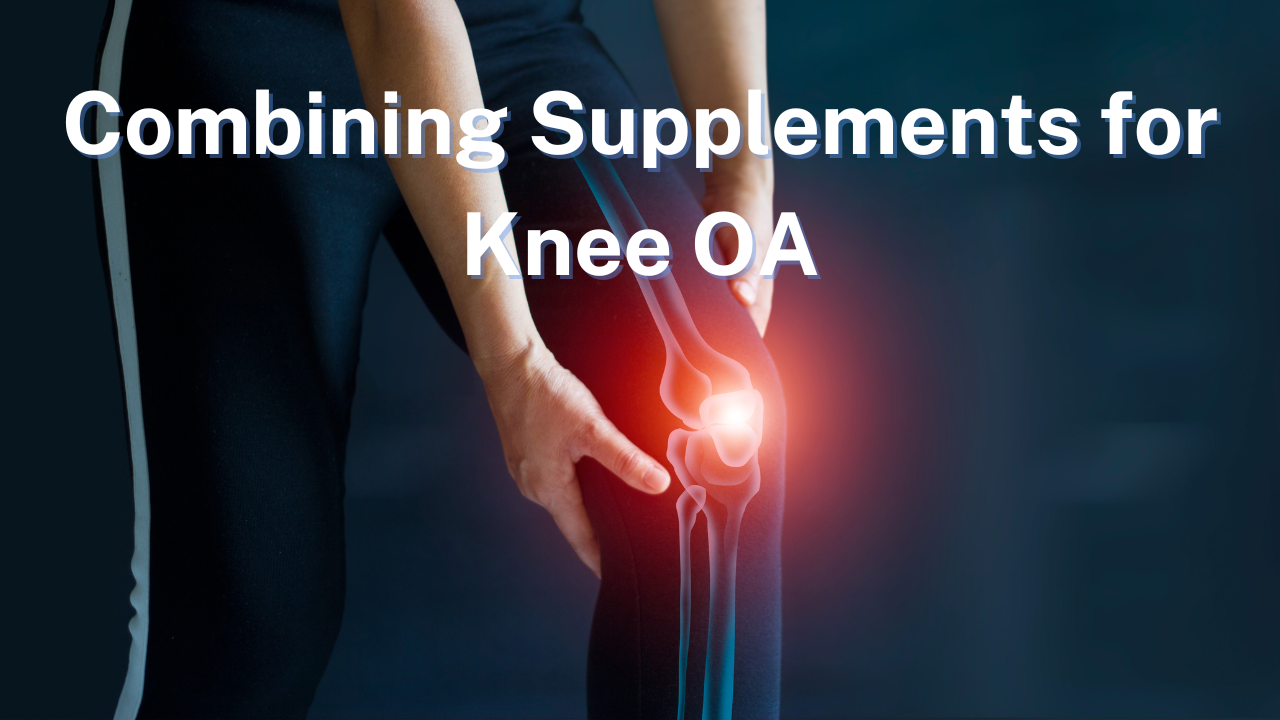Could Combining Supplements Make the Difference in Knee OA?

Many physical therapists and orthos know the standard supplement for arthritis for years has been glucosamine. But what if you combined other supplements together: could you get a bigger impact and would it be safe? A new study is out that looks at combining supplements and their effects on PT specific measures like pain, ROM, and function. Check out the video with the transcript below and research article here: ''
Transcript:
Here is a recent article that was published by Mineretti et al in the open access journal called Cureus. This article was a small randomized trial looking at a chondro-protective supplements. So, for all my PTs out there and my orthos there, this is a great article for you.
I know a lot of physical therapists give me flak and say there's not a lot of stuff on nutrition and orthopedics and well, this is a perfect one for you. So the subjects, there was 51 subjects in all, there was three different groups or arms if you will. the first arm was a control group. So they basically took a sugar pill. second group took a combined drug or supplement rather it's called Syalox.
And in that was 300 mg of hyaluronic acid combined with 100 mg of boswellia; for any of you that have taken my courses, you know that bosal has powerful anti inflammatory effects and can be very effective for many arthritic conditions. check out some of our other videos and blog posts on that on that compound. The other arm received a combination of glucosamine chondrites, sulfate and curcumin.
We've also talked about curcumin in our courses. The ability for it to reduce inflammation is very similar to an NSAID without as many side effects. Anyhow, the three outcome measures they were primarily focused on one was pain that was pain at rest and pain with movement. The second outcome was range of motion and the third was the Womac, which is basically a functional measure of the knee during standing, walking, stiffness, pain, that sort of thing.
Well, obviously, the control group saw no changes if anything they got worse with pain. but the two treatment groups did see a benefit with pain. Now again, this is statistical benefit. So let's get down to absolute differences and actual minimal clinical important differences. The numeric pain scale change was a one. So I would say that's pretty minimal, not nothing really to write home about, but the range of motion scores in the two treatment groups were significantly
improved from 100 and 35 degrees of knee flexion up to about 100 and 60. So that would be not only statistical that would also be clinically significant. The Womac score also improved 6 to 7 points in both treatment groups. So overall, not meeting MC ID, which I believe for the total score is around 16, but approaching 10, which might be still significant.
So either way that is 2 really good compounds that we can look at for improving osteoarthritis. And hopefully we see some more studies coming out on their effectiveness. If you like this, check out our courses and love to see you online and post some comments. Have a good day. Bye.
If you like what you see here then know there is more in our 3 board-approved continuing education courses on Nutrition specific for Physical Therapists. Enroll today in our new bundled course offering and save 20%, a value of $60!

